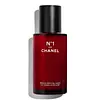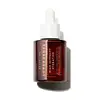What's inside
What's inside
 Key Ingredients
Key Ingredients

 Benefits
Benefits

 Concerns
Concerns

 Ingredients Side-by-side
Ingredients Side-by-side

Camellia Japonica Flower Water
Skin ConditioningPropanediol
SolventGlycerin
HumectantWater
Skin ConditioningPentylene Glycol
Skin ConditioningSodium Citrate
BufferingSodium Polyacrylate
AbsorbentFaex
Skin ConditioningCoffea Arabica Seed Oil
MaskingCamellia Japonica Flower Extract
EmollientParfum
MaskingChlorphenesin
AntimicrobialCitric Acid
BufferingEthylhexyl Palmitate
EmollientCaprylyl Glycol
EmollientXanthan Gum
EmulsifyingSodium Hyaluronate
HumectantChondrus Crispus Powder
AbrasiveAdenosine
Skin ConditioningLactic Acid
BufferingSaccharide Isomerate
Humectant1,2-Hexanediol
Skin ConditioningPalmitoyl Tetrapeptide-7
Skin ConditioningCamellia Japonica Flower Water, Propanediol, Glycerin, Water, Pentylene Glycol, Sodium Citrate, Sodium Polyacrylate, Faex, Coffea Arabica Seed Oil, Camellia Japonica Flower Extract, Parfum, Chlorphenesin, Citric Acid, Ethylhexyl Palmitate, Caprylyl Glycol, Xanthan Gum, Sodium Hyaluronate, Chondrus Crispus Powder, Adenosine, Lactic Acid, Saccharide Isomerate, 1,2-Hexanediol, Palmitoyl Tetrapeptide-7
Water
Skin ConditioningGlycerin
HumectantGlycereth-26
HumectantTrehalose
HumectantSaccharide Isomerate
HumectantMethyl Gluceth-20
HumectantAlcohol Denat.
AntimicrobialDiglycerin
HumectantHydroxyacetophenone
Antioxidant1,2-Hexanediol
Skin ConditioningCaprylyl Glycol
EmollientAvena Strigosa Seed Extract
Skin ConditioningLecithin
EmollientXanthan Gum
EmulsifyingSodium Hyaluronate
HumectantCitric Acid
BufferingSodium Citrate
BufferingSodium Surfactin
CleansingPotassium Sorbate
PreservativeSodium Hydroxide
BufferingOpuntia Ficus-Indica Stem Extract
Skin ConditioningOpuntia Ficus-Indica Callus Culture Extract
AntioxidantWater, Glycerin, Glycereth-26, Trehalose, Saccharide Isomerate, Methyl Gluceth-20, Alcohol Denat., Diglycerin, Hydroxyacetophenone, 1,2-Hexanediol, Caprylyl Glycol, Avena Strigosa Seed Extract, Lecithin, Xanthan Gum, Sodium Hyaluronate, Citric Acid, Sodium Citrate, Sodium Surfactin, Potassium Sorbate, Sodium Hydroxide, Opuntia Ficus-Indica Stem Extract, Opuntia Ficus-Indica Callus Culture Extract
 Reviews
Reviews

Ingredients Explained
These ingredients are found in both products.
Ingredients higher up in an ingredient list are typically present in a larger amount.
1,2-Hexanediol is a synthetic liquid and another multi-functional powerhouse.
It is a:
- Humectant, drawing moisture into the skin
- Emollient, helping to soften skin
- Solvent, dispersing and stabilizing formulas
- Preservative booster, enhancing the antimicrobial activity of other preservatives
Caprylyl Glycol is a humectant and emollient, meaning it attracts and preserves moisture.
It is a common ingredient in many products, especially those designed to hydrate skin. The primary benefits are retaining moisture, skin softening, and promoting a healthy skin barrier.
Though Caprylyl Glycol is an alcohol derived from fatty acids, it is not the kind that can dry out skin.
This ingredient is also used as a preservative to extend the life of products. It has slight antimicrobial properties.
Learn more about Caprylyl GlycolCitric Acid is an alpha hydroxy acid (AHA) naturally found in citrus fruits like oranges, lemons, and limes.
Like other AHAs, citric acid can exfoliate skin by breaking down the bonds that hold dead skin cells together. This helps reveal smoother and brighter skin underneath.
However, this exfoliating effect only happens at high concentrations (20%) which can be hard to find in cosmetic products.
Due to this, citric acid is usually included in small amounts as a pH adjuster. This helps keep products slightly more acidic and compatible with skin's natural pH.
In skincare formulas, citric acid can:
While it can provide some skin benefits, research shows lactic acid and glycolic acid are generally more effective and less irritating exfoliants.
Most citric acid used in skincare today is made by fermenting sugars (usually from molasses). This synthetic version is identical to the natural citrus form but easier to stabilize and use in formulations.
Read more about some other popular AHA's here:
Learn more about Citric AcidGlycerin is already naturally found in your skin. It helps moisturize and protect your skin.
A study from 2016 found glycerin to be more effective as a humectant than AHAs and hyaluronic acid.
As a humectant, it helps the skin stay hydrated by pulling moisture to your skin. The low molecular weight of glycerin allows it to pull moisture into the deeper layers of your skin.
Hydrated skin improves your skin barrier; Your skin barrier helps protect against irritants and bacteria.
Glycerin has also been found to have antimicrobial and antiviral properties. Due to these properties, glycerin is often used in wound and burn treatments.
In cosmetics, glycerin is usually derived from plants such as soybean or palm. However, it can also be sourced from animals, such as tallow or animal fat.
This ingredient is organic, colorless, odorless, and non-toxic.
Glycerin is the name for this ingredient in American English. British English uses Glycerol/Glycerine.
Learn more about GlycerinSaccharide Isomerate comes from sugars found in corn. It is a skin hydrator.
The structure of this ingredient can be altered to be more similar to the carbohydrates found in our skin. This ability to mimic our skin gives it hydrating properties.
Specifically, saccharide Isomerate is a humectant. Humectants draw moisture from the air to our skin.
Research shows Saccharide Isomerate to be an effective moisturizer.
Learn more about Saccharide IsomerateSodium Citrate is the sodium salts of citric acid. In skincare, it is used to alter pH levels and acts as a preservative.
Its main functions are to maintain the pH of a product and neutralize metal ions.
The acidity of our skin is maintained by our glands and skin biome; normal pH level of skin is slightly acidic (~4.75-5.5).
Being slightly acidic allows our skin to create an "acid mantle". This acid mantle is a thin barrier that protects our skin from bacteria and contaminants.
Learn more about Sodium CitrateSodium Hyaluronate is hyaluronic acid's salt form. It is commonly derived from the sodium salt of hyaluronic acid.
Like hyaluronic acid, it is great at holding water and acts as a humectant. This makes it a great skin hydrating ingredient.
Sodium Hyaluronate is naturally occurring in our bodies and is mostly found in eye fluid and joints.
These are some other common types of Hyaluronic Acid:
Learn more about Sodium HyaluronateWater. It's the most common cosmetic ingredient of all. You'll usually see it at the top of ingredient lists, meaning that it makes up the largest part of the product.
So why is it so popular? Water most often acts as a solvent - this means that it helps dissolve other ingredients into the formulation.
You'll also recognize water as that liquid we all need to stay alive. If you see this, drink a glass of water. Stay hydrated!
Learn more about WaterXanthan gum is used as a stabilizer and thickener within cosmetic products. It helps give products a sticky, thick feeling - preventing them from being too runny.
On the technical side of things, xanthan gum is a polysaccharide - a combination consisting of multiple sugar molecules bonded together.
Xanthan gum is a pretty common and great ingredient. It is a natural, non-toxic, non-irritating ingredient that is also commonly used in food products.
Learn more about Xanthan Gum